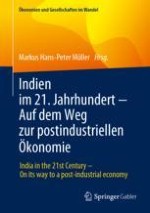2024 | OriginalPaper | Chapter
11. Die Außenpolitik und Außenwirtschaft Indiens
Author : Herbert Wulf
Published in: Indien im 21. Jahrhundert − Auf dem Weg zur postindustriellen Ökonomie
Publisher: Springer Fachmedien Wiesbaden
Activate our intelligent search to find suitable subject content or patents.
Select sections of text to find matching patents with Artificial Intelligence. powered by
Select sections of text to find additional relevant content using AI-assisted search. powered by
